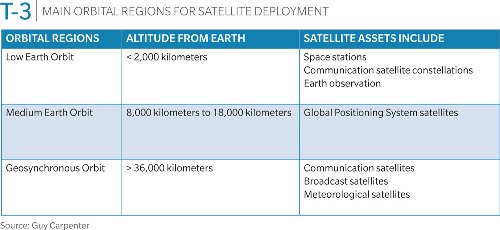The most serious threat to high-value satellites and space infrastructures in the Earth’s orbit today is the risk of collision with other satellites or space debris. As more satellites are sent into the Earth’s orbit to provide services and technology we now take for granted, including global communications and broadcasting, air traffic control, weather forecasting and disaster management, the area is becoming increasingly cluttered with satellites (operational and defunct) and other fragments, enhancing the risk of collision. Although deorbiting strategies are in place for some modern satellites, tens of thousands of objects still circulate the planet at extremely high speeds.
The risk posed by space debris is therefore growing, as demonstrated by recent collisions involving Ecuadorian satellite Pegaso in May 2013, Russian research satellite BLITS in January 2013 and the U.S. commercial Iridium satellite in February 2009. As society becomes increasingly reliant on satellite technology, assets worth billions of dollars are being sent into orbit with limited control over the risk of damage by collision. The (re)insurance sector is integral to continued space development and has a key role to play in promoting debris mitigation.
Orbital Regions
Space debris, comprising tens of thousands of objects including abandoned rocket stages, defunct satellites and their fragments, is mainly located in three regions of the Earth’s orbit (see Table T-3). The highest amount of space junk is found in the Low Earth Orbit (LEO) as it is the simplest and most cost-effective region for satellite placement. Satellites here are fast moving and complete one orbit of Earth roughly every 90 minutes. The LEO covers all orbits below 2,000 kilometers and mainly houses manned space stations, communication satellite constellations and observation satellites. Given satellites in this orbital range have a small footprint, a high number of devices are required to make worldwide communication possible.
The Medium Earth Orbit (MEO) region is where communication satellites that cover the North and South Poles are located. Given the MEO is consistent and highly predictable, it is also widely used by Global Positioning System (GPS) satellites.
Finally, the Geosynchronous Orbit (GEO) is around 36,000 kilometers above Earth, allowing satellites here to follow the Earth’s rotation. The GEO therefore has the broadest footprint and is well suited for satellite communications and broadcasting, as they cover most of the Earth’s surface.
